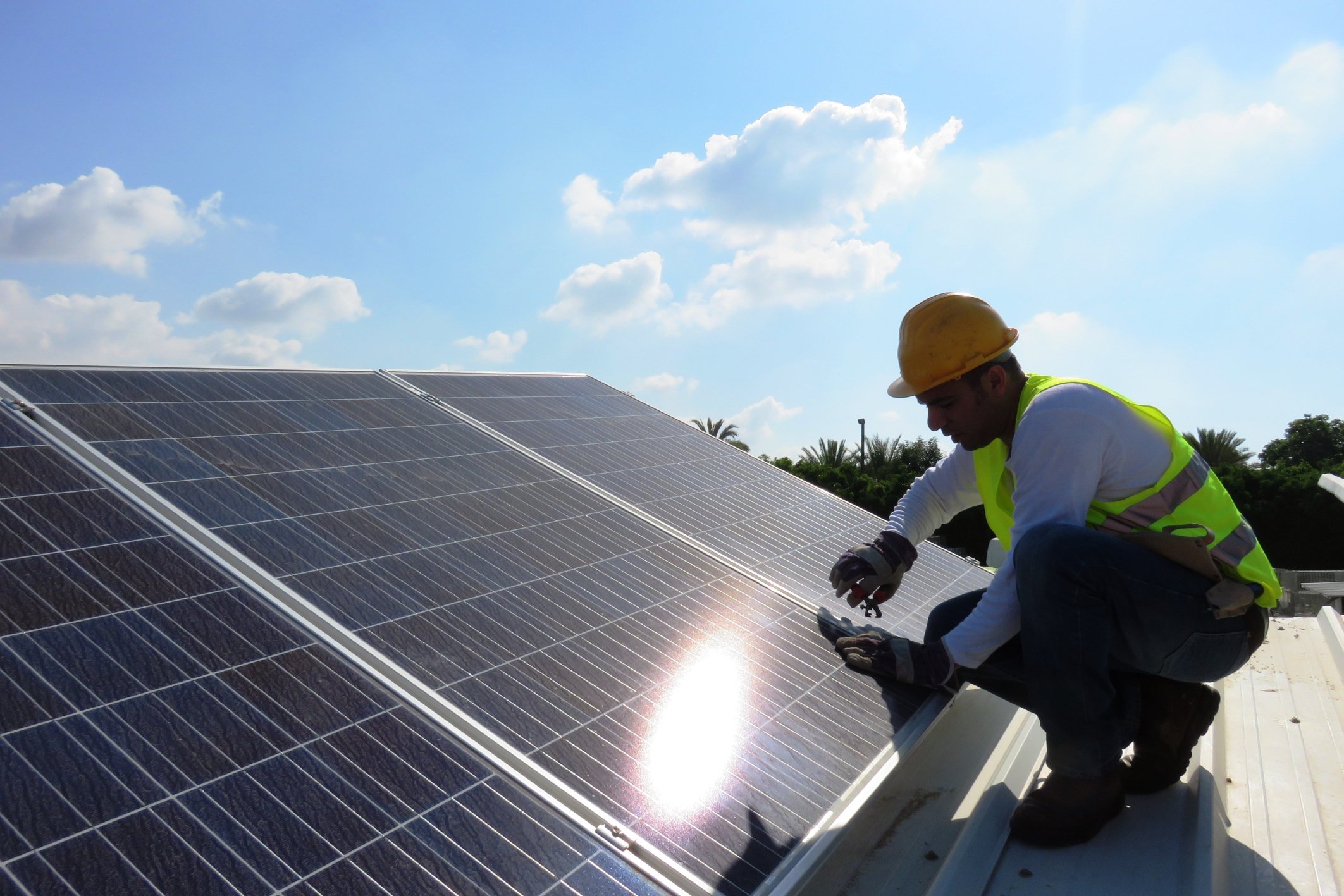
Renewable energy assets are combining with energy storage to create a "virtual power plant" in New York. And it could be a framework for the future. Image source: Getty Images.
What if we could make hundreds, or even thousands, of solar and energy storage systems work together to create a virtual power plant? It could replace a centralized coal or natural gas plant, stabilize the grid, and bring consumers' homes into the asset base that makes the grid work.
That idea may not be far from reality, and it is exactly what Consolidated Edison (ED +0.74%), SunPower (SPWR +0.00%), and Sunverge Energy announced earlier this week in a pilot program in New York City and Westchester County. Three hundred homeowners who participate in the program will get a solar and energy storage system that connects to the grid and can be controlled by the utility to create a virtual power plant. And that new plant design could change how utilities look at energy.

Rooftop solar could now be an integral part of the grid. Image source: SunPower.
Changing the status quo
As the grid is designed today, large power plants push energy to consumers through the transmission and distribution grid. At the end of the month, customers get a bill for what they use. It's simple, but there's very little choice, and it's not very flexible from a resource standpoint.
What the "virtual power plant" does is to take solar energy created on a home's rooftop and combine it with energy storage to create the impact of a power plant, but via distributed (or spread out) assets, usually on a customer's property. Through a combination of Sunverge's energy storage management system and ConEdison's market signals, the energy storage assets can offload or supply energy to the grid as needed. But unlike a traditional power plant, this virtual plant lets energy flow both ways.
This is just the start of virtual power plants
ConEd is taking a lead in concepts like the virtual power plant mainly because regulators in New York state are pushing it to do so. They're working on the state's Reforming the Energy Vision (REV) initiative to incorporate more renewable energy into the grid. The core of that is learning how to adapt to the inconsistent output of energy from wind and solar assets, through the use of energy storage and adjusting demand profiles, known as demand response. If the utility can control these assets, it will theoretically create a more stable and efficient grid.
But this may just be the start of how utilities interact with renewable energy and distributed assets. In the future, customers may be able to store energy they create from a rooftop solar setup for use at night. They may be able to arbitrage price changes throughout the day to make money from an energy storage system. And smart appliances may provide a revenue or cost avoidance opportunity through demand response. There are a lot of options, and that's part of what's being tested in this virtual power plant deal.
Expect more energy innovation in the future
Broadly, this is an example of renewable energy companies, in this case SunPower and Sunverge, working with a utility to design the grid of the future, rather than taking an adversarial stance. And given the complexity of providing customers with consistent power when they need it and the growth of distributed resources like rooftop solar, it's key that these players start to work together.
For now, this virtual power plant is a pilot program, but if the regulatory framework starts to push utilities in this direction, we could see similar plants pop up across the country. And that would help create a cleaner, more efficient grid for everyone.







